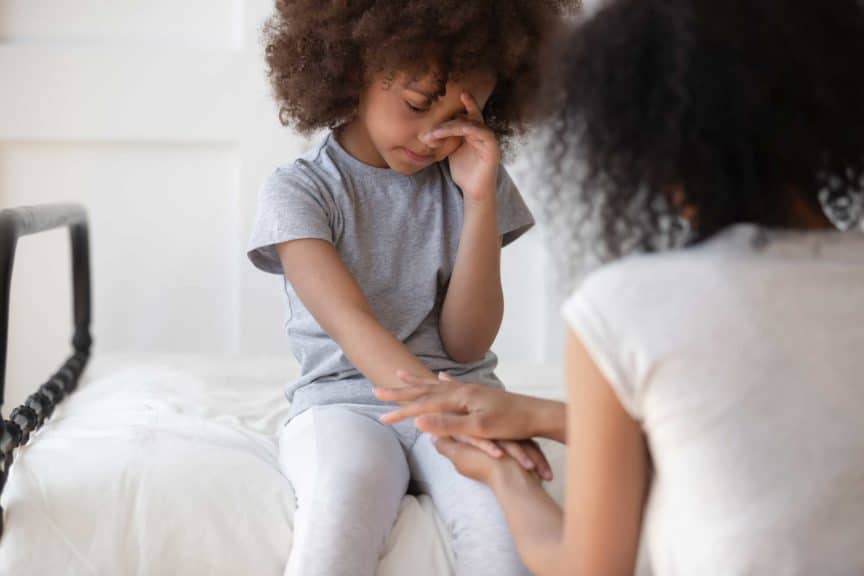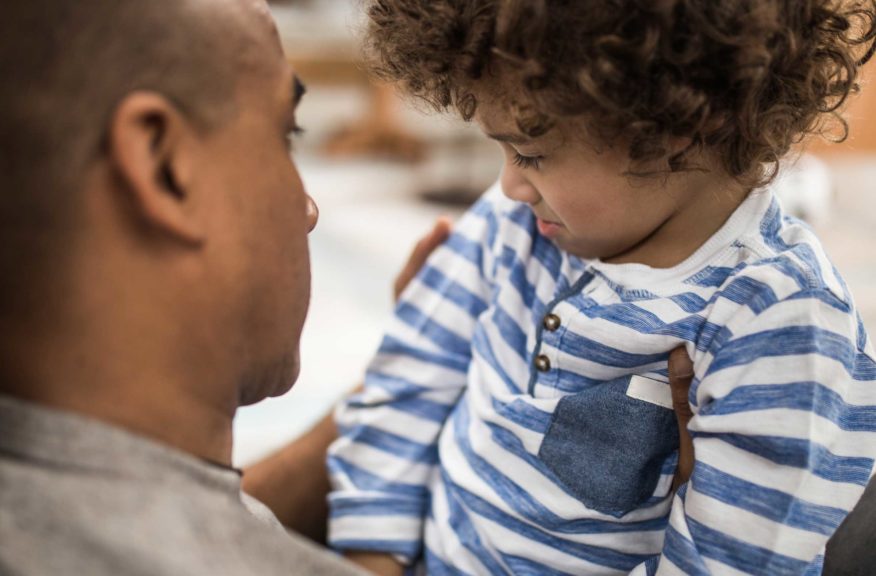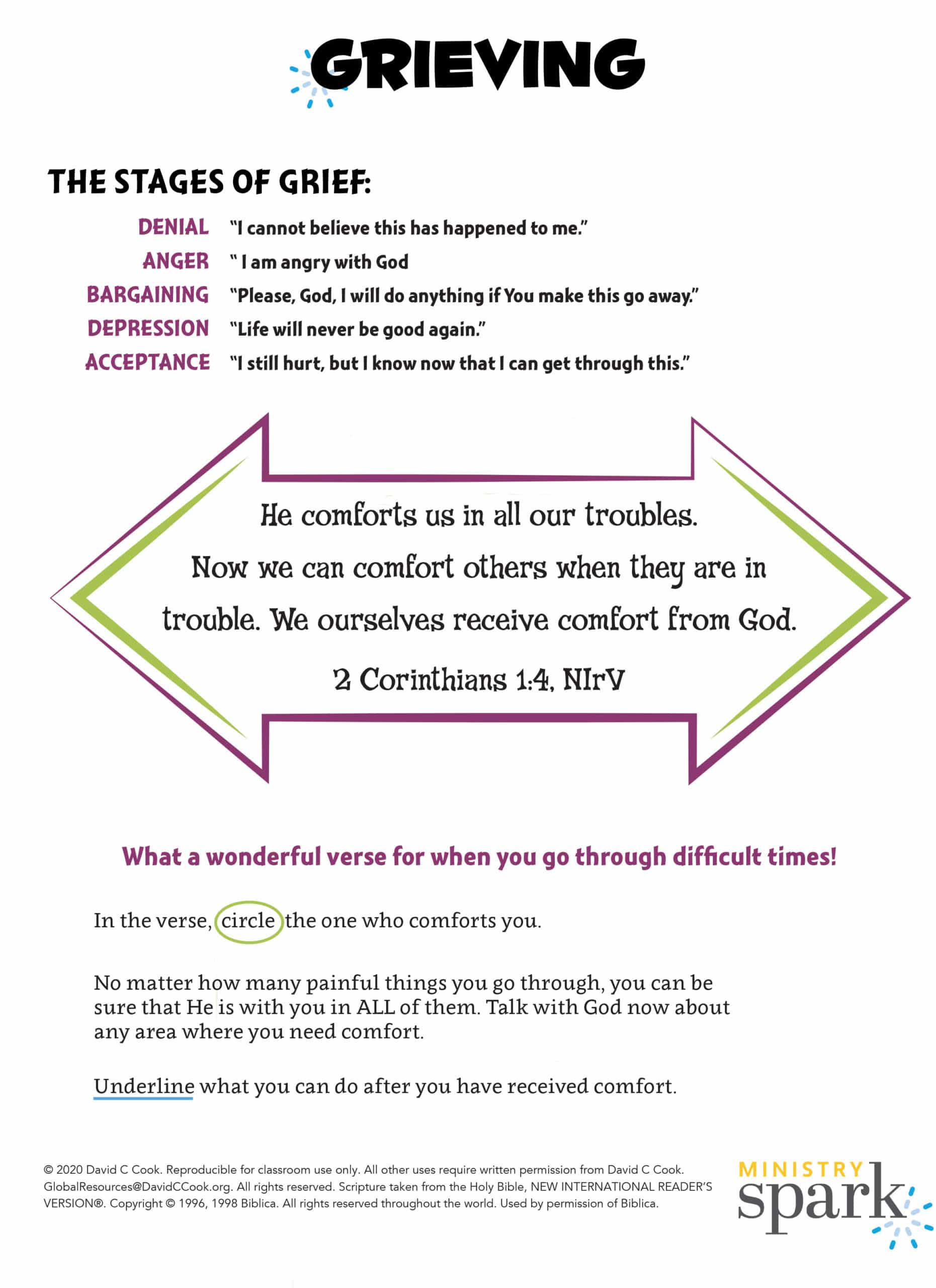One of the most harrowing moments in the life of any person serving in ministry is the moment when you have to decide what to do about a child who may be in a crisis or abusive situation. Although laws and procedures will vary, here is an introductory guide to this issue.
Especially now that we are beginning to be able to meet back together—after a long time apart—it’s important to look for these signs of abuse and trauma in kids’ lives. Remember that, while many of us had safe refuge during COVID-19, some of our most vulnerable did not.
For Whom Are You Responsible?
You are going to get tired of hearing this statement, but here it goes: Check your local laws first so that you can be sure your ministry is following the legal obligations. But beyond that, as a Christian you are responsible for anyone who is your neighbor (Matthew 22:39).
Remember that, while many of us had safe refuge during COVID-19, some of our most vulnerable did not.
And we will suggest that, as Jesus taught in Luke 10, your neighbor is anyone who needs your help. In family, youth, or children’s ministry, this might mean an infant in your nursery, an elementary school child visiting Sunday school with a friend, or a teenager who showed up to play basketball at a youth event.
If a child or young person is possibly in a dangerous situation, you must not ignore it—even if you don’t know the child well or don’t know his family.
What Abuse Signs Might You Notice?
It is not unusual for children to be very good at hiding any physical signs of abuse. And just to be clear, you should never ask a minor to remove clothing or show you a possible injury except in the rare case of an injury or emergency medical situation actually taking place in your presence.
What other signs might tell you that someone is hurting a child? What follows is a short list of potential signs, but for more information, it would be beneficial to talk to your local health providers and specialists who treat child abuse.

- Changes in behavior or irregular behavior: avoiding physical contact, startling easily at adult voices, childlike or regressive behavior, changes in personal hygiene, changes in clothing (always wearing long sleeves or baggy clothes, for example), becoming tense or frightened around particular persons or avoiding being in the same room with a particular person.
- Excuses for changes in behavior: often complaining of a stomachache, calling themselves clumsy, talking about bumping into things or falling down.
- Verbal red flags: talking about extreme nightmares, mentioning depression or anxious thoughts, not getting to sleep, inappropriate sexual talk, unusual silences or changes in verbal patterns, unusual use of adult language, being defensive about any particular person or relationship.
These are just some of the signs you can look out for, and keep in mind that context is important.
One sign on its own might not be significant, but several signs happening together might be cause for more concern. Noticing these signs might not be enough to cause your reporting process to go into action, but it could mean that you should pay close attention and talk to the person to make a better assessment of the situation.
What Abuse Must You Report?
Remember: Check your local laws first.
Some laws require you to report any suspicions of abuse or neglect, or any occurrence of minors expressing a desire to harm themselves. There are laws that require you to support suspicious marks on a child’s body. And some require you to report any episodes you witness of a child being harassed or any behavior of a parent or caregiver that might indicate a situation of neglect.
Your first responsibility and action must be the protection of the most vulnerable parties.
Although it’s important to remember that you are responsible for loving the whole family—including the adults—and that there are some difficult situations in which the removal of the children from a home may not result in a good situation for the children, your first responsibility and action must be the protection of the most vulnerable parties.
To demonstrate the different kinds of questions you might have and the proper responses, consider these two scenarios.
Scenario 1
You think (but aren’t sure) that you saw a mark on a child’s back that looks suspicious. The child has been acting strangely this evening and is avoiding being touched. What do you do?
Response: If you aren’t sure about what you saw, talk to another volunteer or leader who has also been interacting with the child during the same time and see whether they noticed anything. If another person has a similar report, move to enact your reporting process. If no one else has witnessed anything suspicious, talk to the child.
See the next section for tips on how to talk to a child about a potentially abusive situation. If the child has an explanation that seems truthful or if you otherwise hear something that absolutely convinces you the child is OK (for example, you see the mark again and realize it is just paint), be sure to touch base with that child’s caregiver to confirm that all is well.
Scenario 2
You notice a teen stealing snacks. When you ask why she is taking the food, she eventually reveals that she and her younger siblings have been without food for several days because her caregiver left the home and hasn’t come back.

Response: Assure the girl that she and her siblings will be taken care of, and let her know that you are going to report the incident. Be clear that she is not getting in trouble and that she has done the right thing by talking to you. Ask another volunteer to sit with the child while you initiate the reporting process.
Evaluate
Notice that in the first scenario the situation was not clear. Reporting a situation of abuse or neglect results in a series of events that can be very difficult for all those involved.
One reason that it’s important to have proper training about this process is that you do want to be as informed as you can be about what to look for and what to report and how to report it, so that you avoid causing any unnecessary trauma or stress for a child and the child’s family.
Notice also that in the second scenario the harmful situation is clear and confirmed. This situation warrants reporting because the children are in need of immediate assistance. The only thing that is not clear is what has happened to the caregiver, who may also be in danger.
But your first priority must be the situation presented to you and the most vulnerable parties in the situation, who are the children.
The authorities and the church leadership can potentially work together to help the whole family.
What Should You Say to the Person Being Hurt?
There are at least two reasons you may need to speak to a child in these situations: establishing the instance of abuse or neglect, or comforting the person. In either case, you should do whatever is necessary to make the child feel safe.
Pick an appropriate place.
While you want to give the person privacy, make sure that you are not alone with a minor. Ask another volunteer to be available, or go into an area that is away from the group but not shut off by a closed door.
Pick a good time, but don’t wait.
As soon as you can, make time to talk with the child—even if that means rearranging your activities or handing your group to another leader.
Ask questions in a direct but nonthreatening way.
Ask questions directly related to things the person has said or things you have witnessed. Here are some examples:
“In group tonight you mentioned that you had been hit several times in the past. How did that happen? When was the last time?”
“I have noticed that you seem really angry lately, and tonight you pushed Carlos when he covered your eyes. Carlos should have kept his hands to himself, for sure. But I just wanted to check in with you. Are you OK? Are you angry at Carlos, or are you angry with someone else?”
Remember not to overstep your boundaries or press for too many details.
If the person is in a harmful situation, you just need to know that. It can be helpful to know who is causing the harm as well. But you do not need to hear details of every act.
A social worker or child psychologist will be more equipped to talk with the person and/or family in detail and provide counseling for the child.
Forcing a young person to talk through intimate details with you is not appropriate and not necessary and can make the child uncomfortable.
However, if the young person wants to tell you things and finds it helpful to do so, be a good listener.

Wait for pauses and ask follow-up questions as necessary. If possible, take notes so that you can keep a record of events for when you talk with authorities later, and let the child know you are taking notes to help you remember the whole story.
Whether abuse has occurred or not, be very careful not to blame or shame the child.
Emphasize that the child is not at fault. Even in the rare case of a young person exaggerating or giving misleading information as a way of getting an adult in trouble, be careful not to make shaming statements.
For instance, saying “I’m concerned that you weren’t able to tell me the truth about what happened” is better than “You’re a liar.” Remember that there is usually a reason for this behavior, and it’s often rooted in problems that are affecting the child.
Provide reassurance, warmth, security, and love.
A child in a difficult situation may be facing all kinds of fears—from being afraid for their own safety to worrying about what will happen to their family or where they will live. Some abusers make their victims feel at fault or threaten terrible consequences if the victim tells anyone about the abuse.
Offer frequent reminders to any children you talk with; tell them they are in a safe place and that there are good people who will help them.
Be considerate and respectful about physical space and touching.
This is true always, but especially when speaking to traumatized children it’s important to state and demonstrate for them that their bodies belong to them and they have a right to say who can or cannot touch them.
It’s also important to let them know that God made them and knows them and loves them exactly as they are right now, no matter what has happened to them. Though you may want to give a friendly hug, it’s better to let the youth initiate a hug than for you to force a hug.
Use your words and your tone to provide reassurance instead. Simple acts such as giving the child a piece of paper that gives your phone number with a reminder to call at any time may be more helpful to the child than a hug.
What’s the Correct Process for Reporting?
Once again, check your local laws first. In some places, every adult is considered a mandatory reporter. In other areas, only people in certain positions are given this responsibility and are protected legally if a report turns out to be incorrect. But in all cases, remember that knowing the legal obligations is just the first step.
As Christians entrusted with the care of someone’s child, even if just for an hour, we should take seriously the command to love one another. Loving children and youth means looking out for their well-being and protecting them from harm.
In any case, your church leadership should have an established and well-planned policy for handling situations concerning possible cases of abuse or neglect. Some ministry leaders work through such plans with their insurance providers. Some insurance companies also provide training to staff and volunteers.
If you don’t know about your church’s plan, or don’t know if one exists, don’t wait to be told about it. Ask about it today. Right now, in fact.
Evaluate Your Plan
This plan should include steps about the process for reporting, including the following details:
- who to call/report to
- in what order
- when the family should be involved
- the contact numbers for each person or agency
The plan should be evaluated and updated frequently. And training on this plan should be given to every person who might come in contact with a minor.
Any time a new volunteer is added to your ministry, make sure the new volunteer is provided with training on this process—ideally, prior to serving.
If you don’t know about your church’s plan, or don’t know if one exists, don’t wait to be told about it. Ask about it today. Right now, in fact.
The plan should also include instructions for how to handle situations in which the abuser is another child or cases in which the child or youth is threatening harm to themselves or others.
What If the Accused Attends Your Church?
If a child accuses a church member, staff person, or volunteer of abuse, your process for reporting should not change. The only thing that is different in such a case is that you have the ability to talk to the suspected perpetrator right away.
Out of an abundance of caution, it is important to take such an accusation seriously and to suspend the accused person’s access to children or youth until the case against them can be verified or disproven.
Obviously, it’s vital to keep accusations and the actions that correspond to them as confidential as possible in order to protect innocent parties on all sides. Your church’s policy for dealing with suspected abuse situations should include information about how to handle the existence of a suspected person or a convicted person in your congregation.
Remember that adults who abuse others have often been the victims of abuse at some point in their lives. God’s command to love our neighbors as ourselves includes loving those who have hurt others.
But your first priority is still the safety and well-being of the most vulnerable parties and the ones in your care as part of your ministry.
What If a Child Is Threatening Harm to Self or Others?
You may have heard some teens saying rather dramatically, “I just want to die!” In many settings, this kind of language is meant to be an expression of frustration or embarrassment, or just simply an exaggerated statement for comedic effect.
But for some teens, especially those in vulnerable or crisis situations, certain statements may be red flags for suicidal ideation or preparations.
For more information, contact your local mental health providers and, ideally, set up an information session for your whole leadership and volunteer team. Such training can actually save lives.
Risk Factors

Remember that teens who are prone to self-harm may have some common risk factors:
- recent conflict with peers or family
- recent loss of a loved one
- previous history of substance abuse
- history of mental illness (for example, depression or anxiety disorders) in either the teen or the teen’s family
- low self-esteem
- victim of bullying (whether cyber, social, psychological, or physical)
- history of any previous suicide attempts
If you know teens who fall into any of these categories (or even if they don’t) and you notice or hear about the following signs, take steps right away to talk to the teen, talk to the teen’s family, and get professional support.
Once again, it’s important to remember to follow your local laws and to know your church’s policy on handling these issues.
- changes in eating, sleeping, or other routine behaviors
- withdrawal from normal social interactions
- notable changes in personality (for example, a quiet child has loud outbursts, or a normally friendly and polite child becomes rude and antisocial)
- changes in student behavior during class, or worse grades
- joking, talking, or posting about suicide or self-harm
- fixation on a celebrity who recently committed suicide
- talking about not being around, not being available for future events, or “saying good-bye”
- talking about (even in a joking manner) plans for how they would commit suicide
Offering help and a listening ear directly to the teen can be a good first step. Talking directly about the teen’s thoughts, reasons for their conclusions, and any plans for suicide can also help the teen to feel understood.
Important Reminder
Remember that talking about suicide does not cause suicide, but ignoring the problem will not prevent suicide.
If a child is clearly planning suicide and has told you about their plans in any way, don’t be afraid to call emergency services. And if the child is with you, arrange for someone to stay with the child at all times until other health services can be accessed. If the child is not with you and is texting or posting online, try to reach the teen or the teen’s family members/friends to determine the person’s location immediately.
When in doubt, call emergency services and follow their instructions.
What Do I Do After Reporting?
If possible and allowed, continue supporting the victim in any way you can, whether by texts, calls, or visits. You may also be able to follow up on the case, but that depends on the circumstances.
If the situation is such that you are not able to be in the child’s life, nothing can stop your offering powerful prayers for the child and the family involved! Find peace in the knowledge that you did what you could.
If the situation has caused you to have troubling thoughts or experience anxiety, pray. Read Scriptures out loud (for example, check out Psalms 18, 23, 27, 46, and 139, and Proverbs 18:10 or Exodus 14:13, 14). And be sure to get counseling for yourself as well from a trusted Christian counselor or pastor.
Remember too that others in your care or ministry may be affected by the victim’s experience, whether or not they know all the details. Keep the details of the situation confidential but provide necessary and loving support to others in your care and to your volunteers or staff.
Find peace in the knowledge that you did what you could.
If appropriate, spend some focused time discussing relevant issues such as abuse, harassment, personal safety, and mental wellness.
Pray regularly for those in your circle of influence and pray over your ministry, asking God to bring peace and comfort to everyone’s hearts and minds.
More Resources for You
- God Cares About My Grief and Loss (COVID-19 Lesson for Kids)
- Hard Questions and Answers from God’s Word
- A Devotion for Kids: Why Hard Times Help Us Grow
- Recognizing Worry and Helping Children Cope with Worry

God Cares About My Grief COVID-19 Lesson and Resources for Kids

God Cares About My Grief COVID-19 Lesson and Resources for Kids











